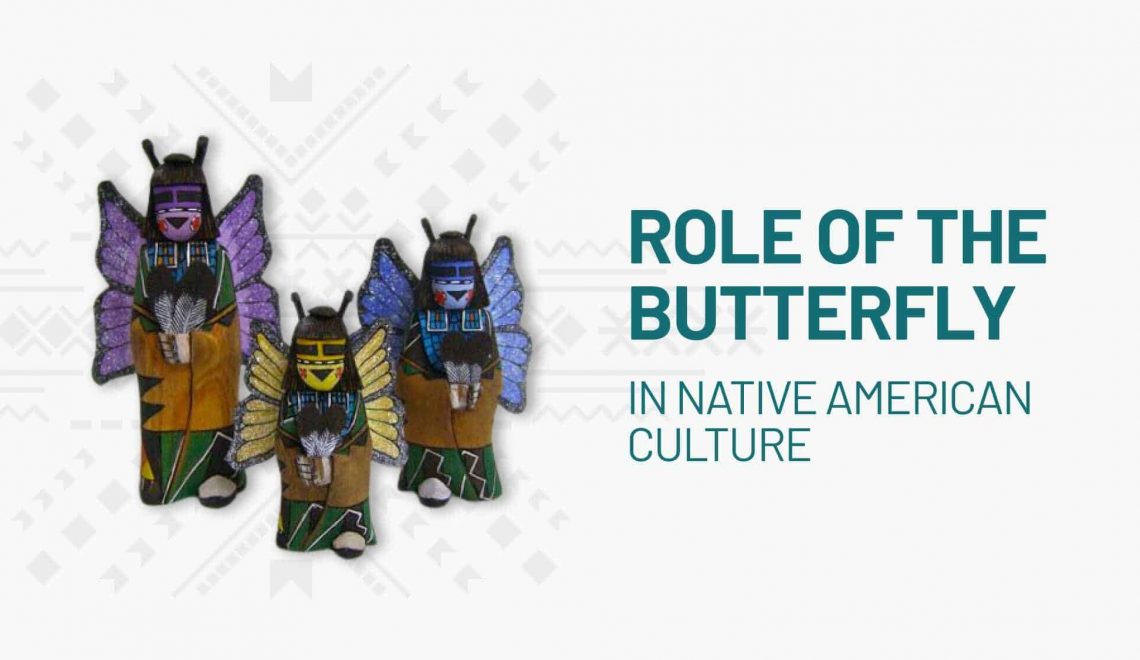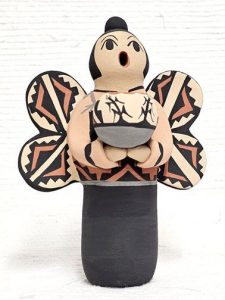
Updated August 2024
Perhaps two of the most visible representations of Hopi culture in our society are the colorful hand-carved Katsina dolls and the costumed dancers that personate the spirits the dolls represent at certain times of the year.
For the Hopi, all things follow a specific, traditional order. In August or September, after gathering the annual harvest and the presentation of the Snake Dance, the Butterfly Dance takes place. This ceremony and social event offers gratitude for the harvest of corn, beans, squash, melons, and other crops and is also a prayer for rain, good health, and longevity for all forms of life going forward.
At this glorious time of year, the butterflies appear. The Hopi represent this event in both their Katsina dolls and by the vibrantly costumed dancers who personate the spirits. Thus, they honor the butterfly for both its beauty and for its contribution to the success of the harvest through pollination.
There are several Butterfly Katsina spirits represented in Native American culture; for example, the Zuni Hemis Butterfly (Poli Sio Hemis); Hopi Butterfly Man (Poli Taka) and Hopi Butterfly Girl (Poli Mana); and Hopi Butterfly Maiden (Palhik Mana).
For the celebratory dancing at this time of year, young women adorn an elaborately painted tablita, or kopatsoki, made especially for them by their dance partner. The kopatsoki displays each woman’s clan symbol, and possibly her partner’s clan symbol, along with other images of animals and corn in a petition for a good harvest and long life. The women may also wear turquoise beads and pins and handwoven sashes. As a finishing detail of the regalia, they paint their bare feet yellow to suggest the feet of the eagle, enabling each to dance lightly during the day’s ceremony.
Throughout time carvers have created Katsina dolls in the likeness of butterflies and other insects and living things. These dolls represent the essence of the spirit of everything in the real world. During sacred dances, the men who personate their spirit present carved replicas of their appearance to women and children.
When we learn more about the beautiful dolls carved to illustrate the Butterfly Maiden, we discover their meanings; the Poli Mana symbolizes the spirit of the butterfly; the Poli Taka her male counterpart; and the Palhik Mana represents the celebration of the harvest and gives thanks.
The Katsina carving is an important practice in Hopi culture and in the dolls made for ritual use, it is a spiritual process. Whether created for a ritual purpose or for illustrating and teaching the ideas and traditions of Hopi society, the colorful and intriguing Katsinam reflect the ideals of the ancestors and their living descendants and carry messages both global and individual to those who observe their beauty.
See these beautiful Butterfly Katsinam at Kachina House.


